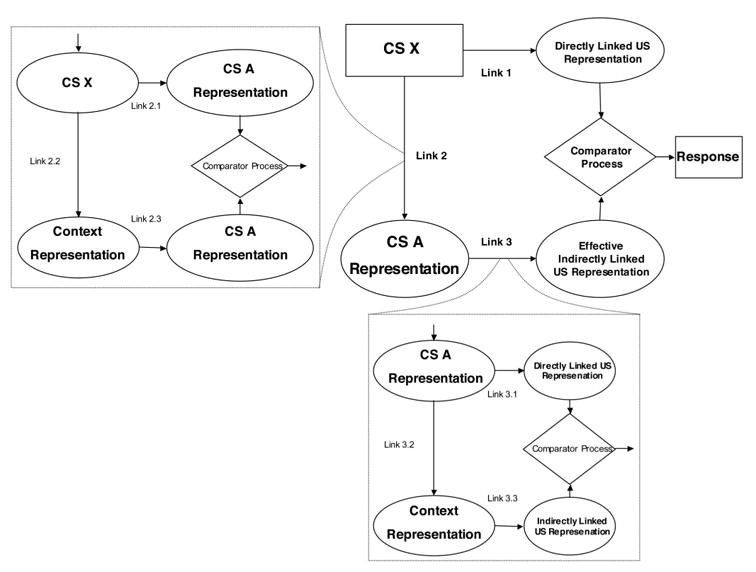Figure 1.

A schematic representation of the extended comparator hypothesis (after Denniston, Savastano, & Miller, 2001) and how it accounts for the counteraction of overshadowing by concurrent degraded contingency treatment. Here, the overshadowing stimulus is depicted as the target cue’s first-order comparator stimulus, and the training context serves as the target cue’s second-order comparator stimulus. As implemented, the training context also acts as the target cue’s first-order comparator stimulus, and the overshadowing cue serves as the target cue’s second-order comparator stimulus.
